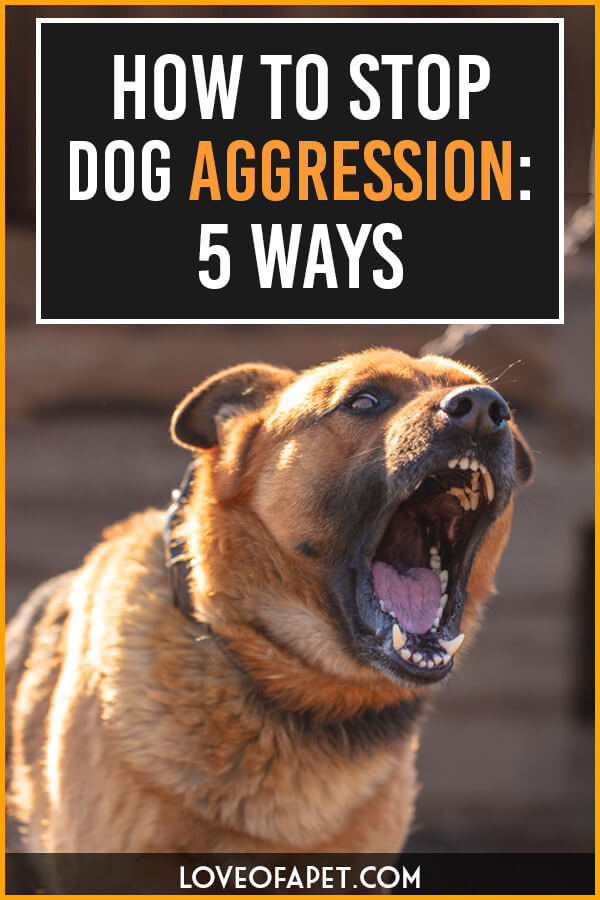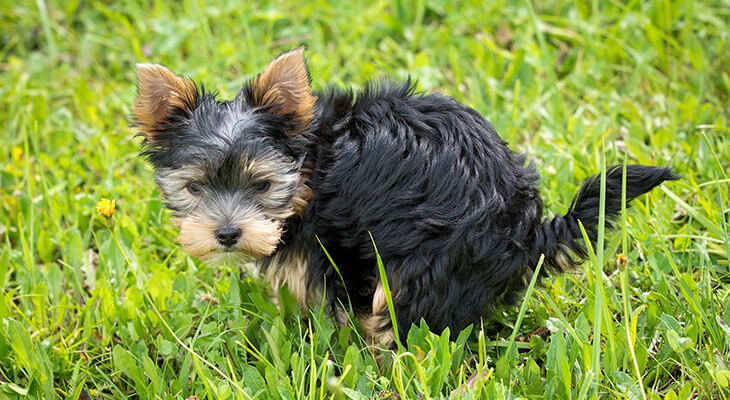Is your pet canine becoming too aggressive for your liking? As a dog owner, it is our responsibility to ensure the safety of our pets as well as those around them. If they are becoming too aggressive, we must keep them in check through proper training and practice.
We should do this to ensure the protection of our neighbors as well as for our safety in the future. However, one may ask how we should go about training them to become less violent towards other humans and their fellow dogs? Read on to find out the answers as soon as possible.
Contents
Signs of Dog Aggression
If your animal friend tends to become restless and always prepared to bite someone’s head off, whether it be human or his fellow animal, chances are your pet is displaying aggressive tendencies. Certain breeds of dogs are trained to be aggressive, especially if they have to serve a particular purpose, such as guard dogs.
However, if we’re talking about domesticated dogs that should usually be gentle and quiet, here are some of the most common signs that you should look for in a canine if you think that he may end up exhibiting aggressive tendencies or if he is already showing aggression towards others and not just playing around.
These signs are listed below:
- Lunging
- Growling
- Baring their teeth
- Raising their legs and feet
- Constantly pricked ears
- Biting
Once you see the signs, you should be able to address them right away as the dog owner and trainer. If you think you can’t do this on your own, please do not hesitate to ask for professional help in the future.
Reasons Why Dogs Get Aggressive
There are many reasons behind such a dynamic display of behavior, especially in animals. In the next section, we will discuss the many possible causes of aggressive behavior, especially in dogs. We will also discuss the many different kinds of aggression that dogs might experience especially when around humans.
Different Types of Dog Aggression
Before anything else, you have to figure out if your animal is displaying dominant aggression or fear aggression. These are two incredibly distinct kinds of aggression.
A. Dominant Aggression
Dominant aggression comes from a place of power. The doggie wants to exude control over his territory, which is why he wants to show aggression towards any other individuals or animals who infringes and his space.
He can also display this towards other dogs who may want to steal away his food or get together with his partner. Whenever the case may be, animals that have dominant-aggressive tendencies tend to be much more aloof and distant compared to other canines.
If your pet displays these types of characteristics, it would be best to call a professional to help you out when it comes to training them.
Signs of Dominant Aggression
A dog that has dominant-aggressive tendencies shows the following symptoms:
1. Blocking the Way
Whether on the street or inside your backyard or house, aggressive pups tend to block your way wherever you go. He does the same with people that you know or strangers in the street.
2. Forced Entry
If the canine tends to barge through doors whether it’s yours or a neighbor’s, this is classic dominant, aggressive behavior. They want to show and display their power in whatever way they can. If you don’t need this in the bud right away, your dog might end up hurting other people as well as other dogs in the process.
B. Fear-Aggression
Some dogs display fear-aggression, which is born out of fear of getting hurt or being shouted at.
Fear-aggressive dogs tend to hold back their ears as well as avoid eye contact with their owners or strangers and other dogs. They also display submissive behavior such as a bowing their heads. They also dislike being touched and will bite you out of fear and for protection.
Some dogs have their tails stuck between their legs, which can also be a sign of fear-aggression. In addition to this, they can even urinate on the spot because of fear, which can also happen to humans who experience extreme terror.
The good news about this is that you can train your dogs to become less aggressive and friendlier towards other people and their fellow dogs. You would need to do this and especially if you’re going to put them in social situations with other pet owners as well as other pets in the park, for example.
It is also advisable for dog owners to train their dogs under the supervision of professionals. This will ensure the safety of both the animal and the human. Be sure to follow the directions of the professional trainer to the letter if you want to handle them on your own. However, if you are inexperienced, you should let the professionals do it instead.
However, it would be best for you to watch each training session. This way, you will be able to find out how to stop animal aggression in its tracks before it even begins on your own.
5 Ways to Stop Dog Aggression
Dog aggression may be difficult to stop for some, but there are steps that you can take to effectively do this without hurting your doggie or yourself in the process. Here are five simple steps to do so.
1. Understand the cause
First, you have to understand where the aggression is coming from. It could be that they are afraid of something or they feel that someone else is infringing in their territory. Whatever the reason may be, you first have to figure out the cause of the aggression and address it as soon as possible.
2. Reward good behavior and don’t punish bad behavior
The next step would be to reward good behavior and refrain from punishing bad behavior. If you do the latter, it can lead to worsening the negative behavioral pattern. It would be best to go back to the previous step and then reward any good behavior with treats or toys that the pet will enjoy.
3. Avoid all of the triggers
You should also try to address or avoid any trigger that could lead to unwanted behavior. Once you can stop it, the next step is to prevent the same event from happening again.
Until you can find a way to train your pets not to behave in such a way anymore despite being triggered, the best solution would be to avoid it as much as possible.
In this regard, and distractions and redirection can work excellently too get the dog’s attention away from the trigger itself. You have to be creative enough to make sure that your distractions end up working for your pets.
Just make sure to keep them and yourself safe during the training sessions. This way, you will not end up hitting them by accident.
If you cannot do this on your own, as mentioned earlier, it is quite possible for you to get professional help in training your dogs. Just make sure to keep them and yourself safe during the training sessions. This way, you will not end up hitting the dot by accident.
4. Do not lock up or chain your dog
Whatever you do, try not to keep your pet confined in one space for longer than necessary. Tying them up with chains can also lead to animal aggression, so do your best to avoid this as much as possible.
If you need to keep them occupying a limited amount of space, make sure that you provide them with a spacious area to play in. This way, they will still have their freedom while keeping them out of harm’s way outside of your house.
5. Have your dogs spayed or neutered
Animals who are in heat tend to become aggressive primarily if they have already found a mate that they would want to copulate with. By having them undergo the said procedures, you will reduce their need to exert dominance and aggression against their fellow canine.
It will also prevent your pets from reproducing excessively and leaving you with too many puppies to take care of on your own.
Conclusion
The most important thing to remember when taking care of aggressive dogs is that aggression comes from a starting point. Once you figure out what the starting point is, you will be able to resolve it quickly without having to resort to physical force to subdue your pet in the future.







Hi! My “rescue” is now here 6 months, he knows basic commands, but he pulls me literally off my feet. I let him out on the extend a leash &
literally ask God to let no one walk by – no person or dog, if one does walk by he becomes out of control & his 65 lbs
becomes 170? I attended the dog lessons with Petco, but he still acts badly with others. Reilly is thought to be 6 yrs old & is neutered, is fine with our hound, who is 9 yrs old. They sleep together with me on the bed. They eat together, in their own space in kitchen & eat their biscuit in their own space in dining room. The problem occurs when I take them out. Jingles, the hound, is fine with people/dogs walking by- we have a corner house, so I can’t see what is around the corner. Reilly goes nuts if someone walks by, I’ve already been slashed by extend a leash. I have a hard time walking due to ankle not working as it should. I let them out, 1 at a time, if they go out together & someone walks by Reilly becomes uncontrollable. I do not have the funds to hire a trainer. I thought I would create an enclosed space using totes to create an enclosed space on the side of house that does not have access to the street &
practice walking back & forth. I don’t know what else to do.
Hi Barbara! First, you need to train your dog to walk on a leash without pulling by following the tips here, then read this guide from redfin to train your dog to behave well in public.
Great advice for teaching people to live with a dangerous, nasty dog. If you tiptoe around and feed enough treats, maybe, just maybe it won’t find any reason to bite you. If you like, living like a captive, in your own home, then implement all this nonsense. Otherwise, find an experienced, balanced trainer to help you with this problem. These dogs are dangerous and coddling them won’t help.
Hi! I have the same problem! The thing is I have a trio of dachshunds, and one of them is the “leader”. We have had him for more than a year and a just cant get him to behave! He is not a big dashound, the runt actually. He is dappled with bow legs and two different colored eyes. He is literally trying to kill other dogs to show dominance. We try taking him on walks but he ends up attacking one or two dogs every time. Also, he cant be walked without being in front of our other dogs, we have tried so many things and it just won’t work!
Without a leader they cannot be obedient. You need to become the alpha or the top dog to set the rules and get your dog to listen to you. Follow the tips here to show your Dachshund you are the pack leader.